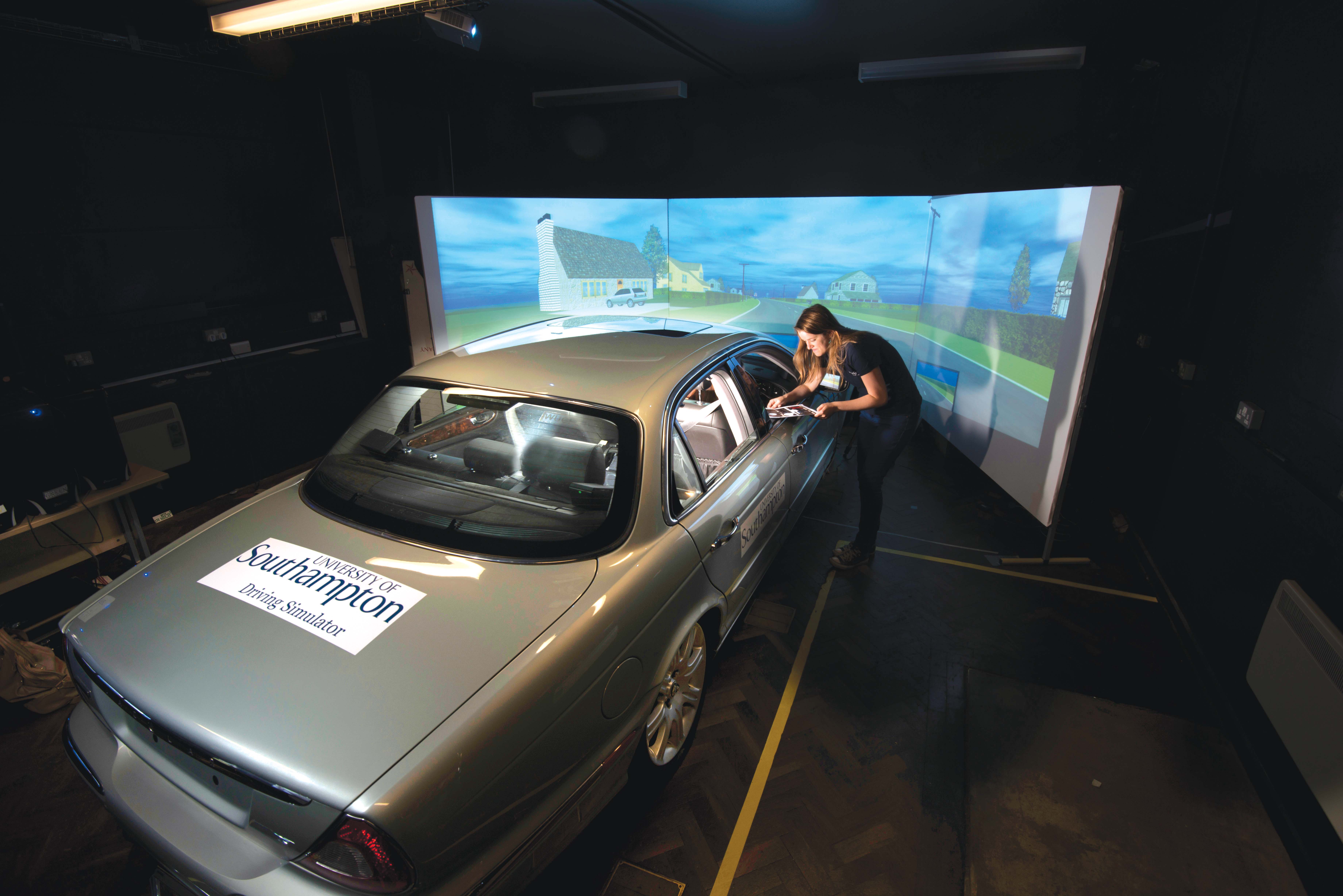
Victoria Banks and Neville Stanton [1] of Southampton University’s Transportation Research Group examine the real impact of creeping driver automation.
Safety research suggests that 90% of accidents are thought to be a result of driver inattentiveness to unpredictable or incomplete information and the vision is that highly automated vehicles will lead to accident-free driving in the future. This means that 100% of the active driving task will need to be completed by a combination of advanced driver assistance systems (ADAS) with the driver becoming a passive monitor of system operation. The European New Car Assessment Program (NCAP) continues to drive vehicle manufacturers to meet minimal safety requirements. It ensures stringent guidelines and testing protocols are rigorously enforced in order that drivers and new car buyers are given transparent safety information through the NCAP Star Rating scheme.
These formal testing procedures focus on the technical aspects of current ADAS which go some way in automating elements of the driving task. Yet there is growing concern within the ergonomics and human factors community that vehicle automation may actually increase pressure on drivers to monitor both the environment and the behaviour of vehicle subsystems. If this is the case the implementation of such systems could contribute to safety concerns rather than overcome them. Failing to acknowledge the role of the driver in an automated vehicle system may lead to undesirable behavioural adaptation such as changes to driver performance, as a result of inadequately controlling for the changing role of the driver within the control-feedback loops.
It is unlikely that drivers will willingly and ever truly become disengaged completely from the task of driving and like a pilot in the cockpit of a modern airliner, the driver of a semi-autonomous car will assume a new supervisory role. This role becomes more important as drivers will have to simultaneously remain aware of multiple vehicle systems’ status and respond accordingly in the event of malfunction or failure. This monitoring by the driver will remain an important aspect of the control system regardless of the driver’s ‘location’ within the driving control-feedback loops.
Despite the disintegration or possible removal of links between the driver and vehicle subsystems in a highly automated driving system, the driver will continue to receive feedback from both the vehicle and environment and be able to anticipate changes in the environment using ‘feedforward’ information.
However, the ability of the driver to actually undertake this new supervisory role is not yet understood but it becoming increasingly important as the average motorist becomes less actively involved in, and more removed from, traditional vehicle handling.
This means that behind the facade of the internationally recognised NCAP star rating there remains a great number of uncertainties.
Various studies report mixed reviews of how automation impacts upon the performance of individual drivers. It is already known that ‘performance’ is heavily influenced by the type of automation and the level at which it is set[2] yet the appropriateness of using automation in driving remains open to debate. A growing body of research highlights the unintended consequences of vehicle automation, widely referred to as ‘out-of-the-loop’ performance problems such as complacency, trust and under- or over- cognitive load that could lead to driver reliance on ADAS functioning[3]. The balance between system performance and driver expectations surrounding system functionality may not be fully aligned. However, nobody really knows how to effectively overcome these shortcomings.
It is important to remember that for some drivers, ADAS can support their driving practice whilst for others, it can encourage riskier behaviour. Although automated technologies can undoubtedly improve road safety, technology fitment could increase this risk of driver disengagement or even alter the perception of ‘risk’ due to the additional security that automation provides.
There would be huge legal and ethical ramifications of being involved in an accident whilst ‘using automation’, one that could abruptly end the vision of accident-free driving in a fully automated driving world.
In order to maximise the safety of drivers and other road users, designers need to be aware of how different design approaches can affect subsequent responses to critical hazards, which calls for extensive research.
Ongoing research funded by the Engineering and Physical Sciences Research Council being conducted at Southampton University’s Driving Simulator Laboratory is adding to the growing body of literature surrounding the implications of human factors in increased vehicle autonomy. Researchers are using a combination of quantitative and qualitative research methods to investigate how increasing the level of automation in the driving task can lead to changes in pre-decisional behaviour and driver-vehicle interaction. In other words how the behaviour underlying subsequent behavioural response may or may not be altered by the introduction of ADAS.
Already the research is revealing some interesting findings with modelling work and experimentation showing how different design philosophies (such as warning based versus non-warning based Autonomous Emergency Brake systems) can affect driver behaviour in different ways.
Modelling techniques show how the addition of automation can change the interaction that occurs between the driver, the vehicle and the surroundings using non-automated representations as a baseline for comparison. Although these can provide useful insights into how the driving system may change as a result of ADAS implementation, user trials are required to establish how drivers manage the additional task complexity.
User trials suggest that automation can affect driver-vehicle interaction (it can affect who – driver or vehicle - does what) depending on the way in which the system is designed and implemented into the vehicle. This in turn can have a direct effect on response times and stopping distances (in the case of critical events) as driver thought processes begin to change. Issues of trust and complacency should not be overlooked throughout the design process as drivers expect a fully functioning system that works all of the time.
In highly automated vehicles, such as those with next generation Cruise Control, the risk of ‘mode error’ or ‘automation surprise’ should remain a real concern for systems designers. Mode error occurs when the human driver fails to understand the current and future state or behaviour of automated subsystems with a common mistake being that the driver thinks the system is ‘on’ when it is actually ‘off’.
Automation surprise occurs when unanticipated system behaviour challenges a driver’s mental models and does something instinctively counterintuitive such as ABS systems releasing the brakes to correct a skid. User trials suggest that automation surprises are likely to be a phenomenon that can be experienced by all drivers regardless of their experience in using the system but more likely to cause greater stress to those with greater usage or experience in using automation. Any errors, delays or other shortcomings in these areas have the potential to result in future accidents - especially if the automation behaves consistently for prolonged periods enabling drivers to become complacent.
Implications
Although it may be argued that the benefits of automation outweigh any potential financial costs, it is becoming clear that the design of the system plays a vital role in controlling or limiting the degree of behavioural adaptation. If one design approach proves to be superior to any other, standardised design protocols should be developed to ensure that all vehicle manufacturers use the same basic model in an effort to balance the effects of automation implementation as much as possible.
A ‘driver sensitive support system’ can only be achieved if there is better integration and acknowledgement of driver-vehicle-world interactions. More research is needed to understand and identify other system weaknesses that go beyond technological components within the driving system.
1. V. A. Banks, N. A. Stanton, C. Harvey. Sub-Systems on the Road to Vehicle Automation: Hands and Feet Free but Not ‘Mind’ Free Driving. Safety Science 62 (2014).
2. R. Parasuraman. Designing automation for human use: empirical studies and quantitative models. Ergonomics 43, 7 (2000).
3. M. R. Endsley, E. O. Kiris. The out-of-the-loop performance problem and level of control in automation, Human Factors 37, (1995).











